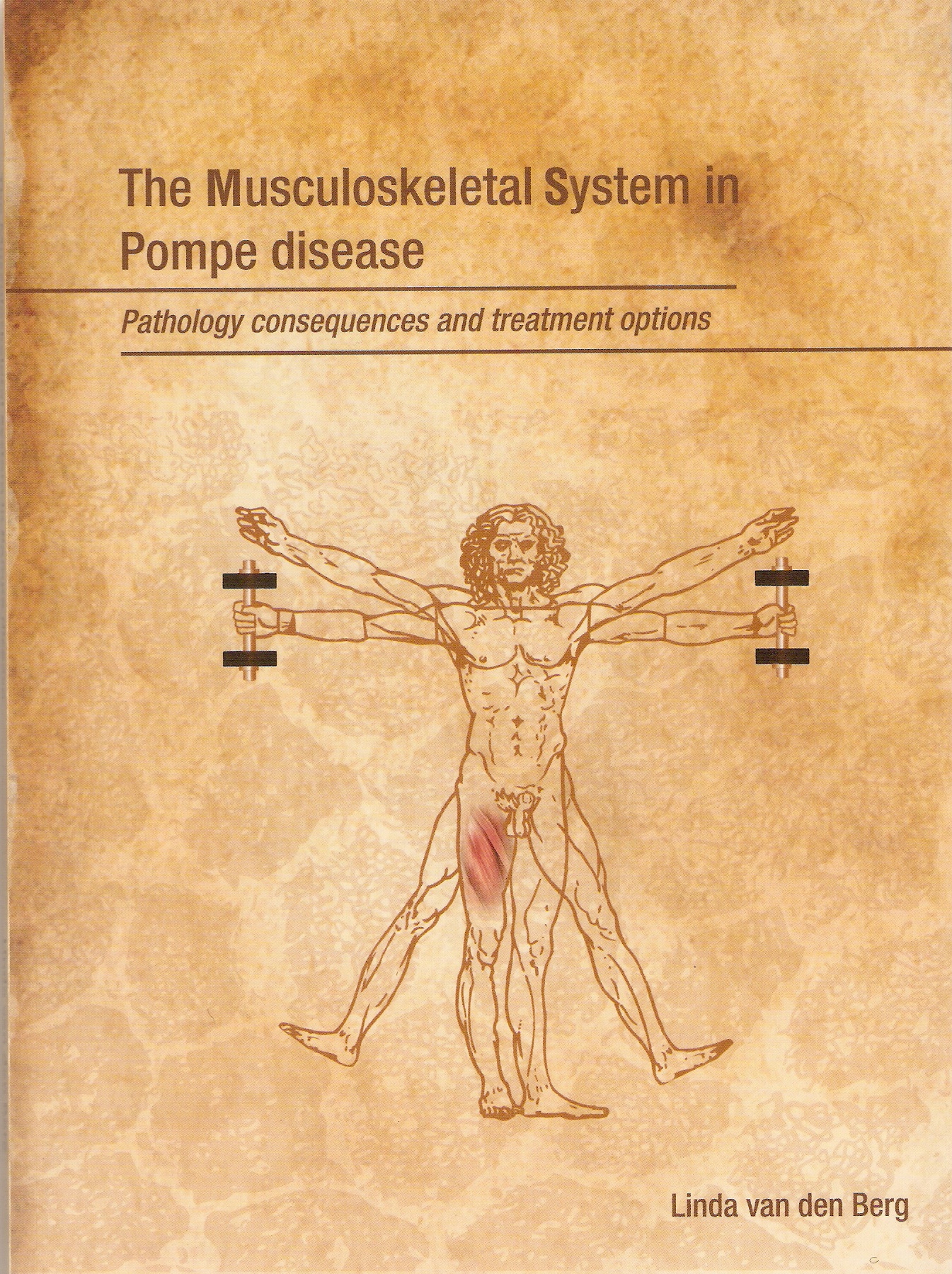 Tuesday June 24, 2014 Dr. Linda van den Berg received her PhD on ‘The Musculoskeletal System in Pompe disease – Pathology consequences and treatment options’ at the Erasmus University Rotterdam.
Tuesday June 24, 2014 Dr. Linda van den Berg received her PhD on ‘The Musculoskeletal System in Pompe disease – Pathology consequences and treatment options’ at the Erasmus University Rotterdam.
All patients with Pompe disease suffer from muscle weakness, which can ultimately lead to wheelchair use and artificial ventilation. Since its registration in 2006, enzyme replacement therapy (ERT) is the only treatment available for patients with Pompe disease. Although the availability of ERT has changed patient’s perspectives in terms of improved survival, increased muscle strength and stabilisation of pulmonary function, not all patients respond equally well, and not all muscle damage and functional impairment is resolved.
The studies described in this thesis explore the muscle pathology in Pompe disease across the clinical spectrum, the interplay between skeletal muscle dysfunction and bone structure and the effects of ERT on it, as well as the use of exercise training to further improve patients’ functioning.
